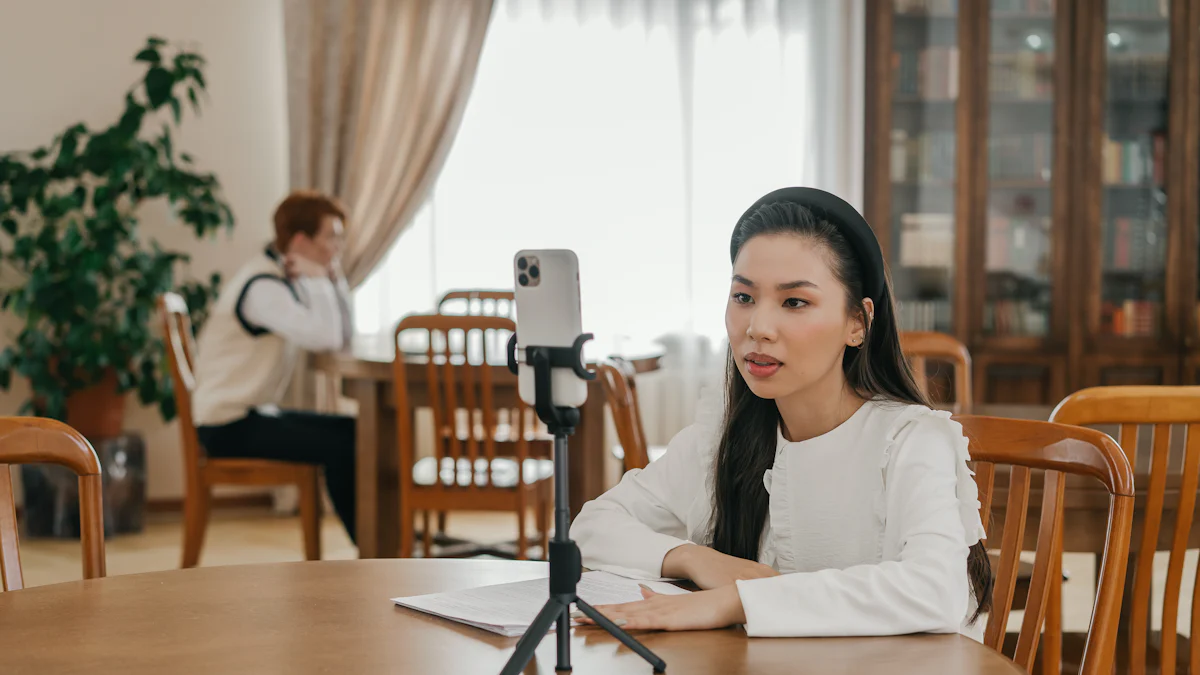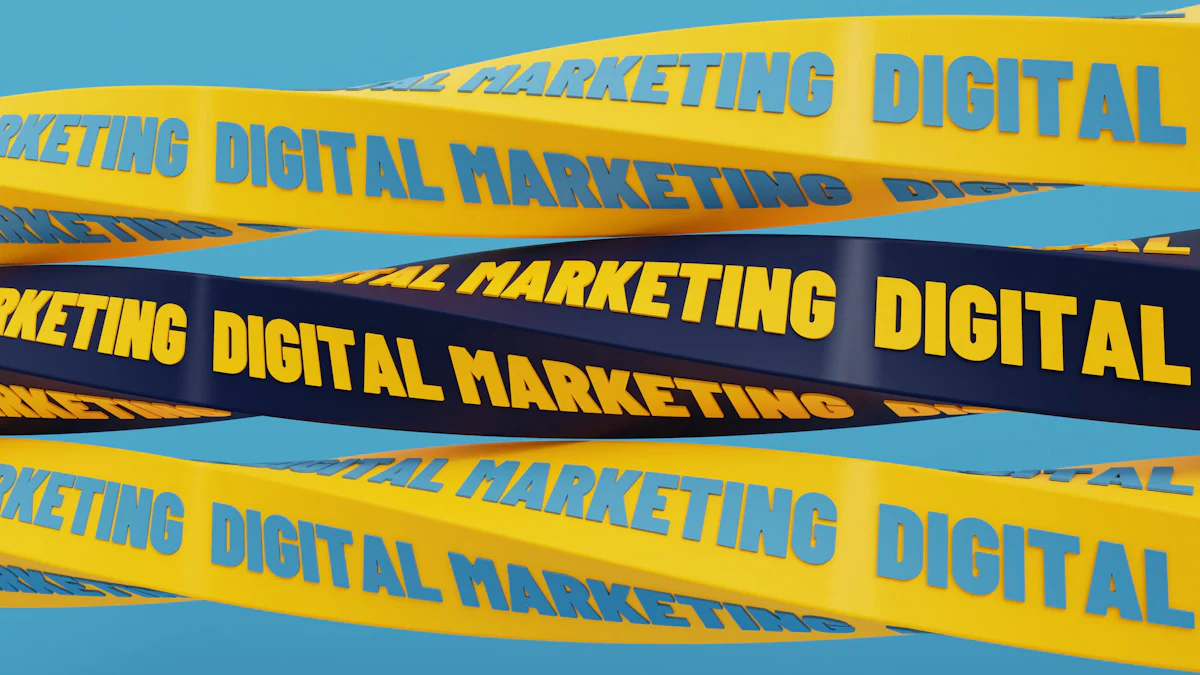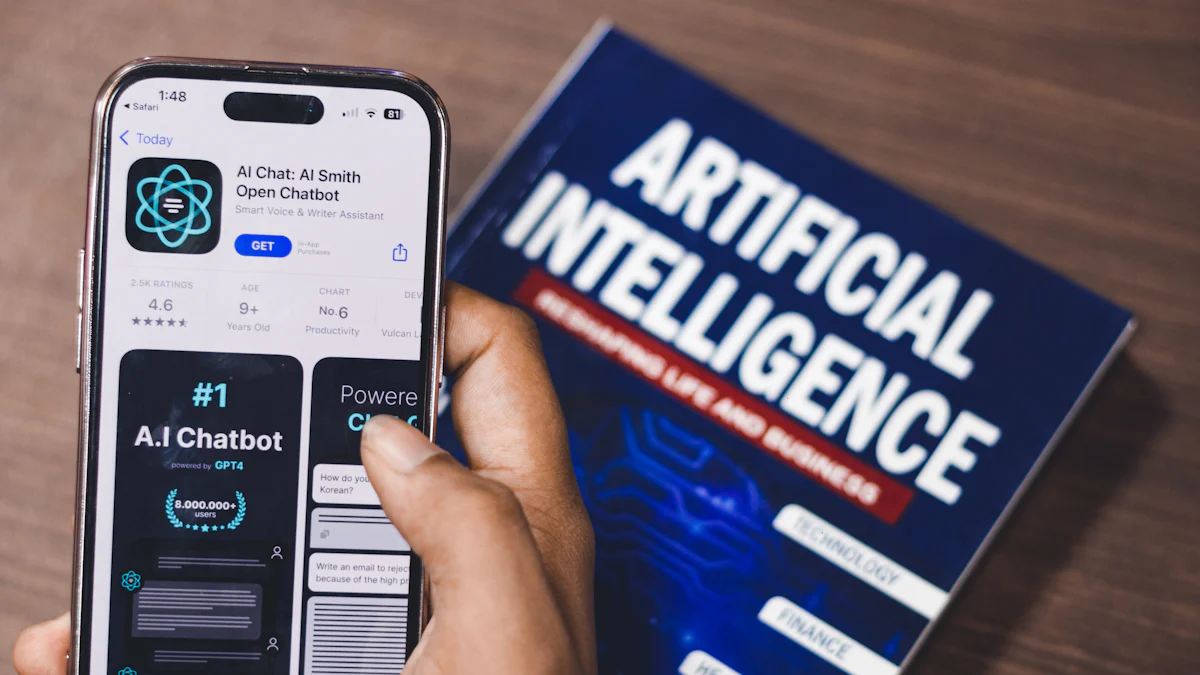What Are AI Influencers and Their Role in Marketing

Imagine a world where influencers never sleep, never age, and can engage millions of followers without stepping out of a virtual space. That’s the magic of AI influencer marketing. These are digital personas powered by artificial intelligence, designed to interact with audiences just like human influencers. They’re not just futuristic concepts anymore—they’re reshaping how brands connect with you and others online.
Why are they so popular? For starters, they’re cost-effective. Unlike human influencers, they don’t need travel or accommodations. Plus, they can scale campaigns globally in no time. It’s no wonder 63% of brands plan to use AI influencer marketing campaigns by 2024. AI influencers also bring precision to marketing. Brands can measure campaign performance with unmatched accuracy, making them a game-changer in today’s data-driven world.
Understanding AI Influencers

What Are AI Influencers?
AI influencers are digital personalities powered by artificial intelligence. Unlike human influencers, they exist entirely in the virtual world. You might think they’re just computer-generated images, but they’re much more than that. These virtual influencers are designed to mimic human traits, behaviors, and even emotions. They interact with audiences on social media platforms, just like real people.
What makes them stand out? For one, they’re available 24/7. They don’t need sleep or breaks, so they can engage with followers around the clock. They’re also fully customizable. Brands can tweak their looks, personalities, and even their tone of voice to fit specific campaigns. Plus, they use data-driven strategies to create content that resonates with their audience. This means they’re always on top of trends and can respond to what’s popular in real time.
How AI Influencers Are Created
Creating an AI influencer isn’t as simple as snapping a photo. It involves a mix of advanced technologies. Developers use AI algorithms and machine learning to give these influencers their intelligence. Computer-generated imagery (CGI) brings their visuals to life, while motion capture technology adds realistic movements. Natural language processing (NLP) helps them communicate effectively, and deep learning models allow them to adapt and improve over time.
The process also requires a lot of creativity. Designers and marketers work together to craft a persona that feels relatable and engaging. Whether it’s a fashion-forward trendsetter or a quirky foodie, every detail is carefully planned to connect with the target audience.
Examples of Popular AI Influencers
You’ve probably seen some AI influencers without even realizing it. Lil Miquela, for example, is one of the most famous virtual influencers. She’s worked with brands like Calvin Klein, boosting their social media engagement by 60%. Then there’s Shudu, a virtual model who collaborated with Balmain to position the brand as a leader in innovation. Even KFC jumped on the trend, creating a virtual Colonel Sanders to blend nostalgia with modern marketing.
These examples show how AI influencers can make a big impact. They’re not just tools for advertising—they’re reshaping how brands connect with audiences.
How AI Influencers Work
Platforms for AI Influencers
AI influencers thrive on the same platforms you use daily. They’re most active on social media, where they can connect with millions of users. Some of the most popular platforms for these influencers include:
- Snapchat
- TikTok
Why these platforms? They’re visual, interactive, and perfect for storytelling. AI influencers use these spaces to share posts, videos, and even live streams. You’ll often see them participating in trends, responding to comments, or creating engaging content that feels personal. For example, an AI influencer might post a TikTok dance challenge or share a behind-the-scenes look at a virtual photoshoot on Instagram.
These platforms also allow AI influencers to build relationships with their audience. They don’t just post and disappear. Instead, they interact with followers, answer questions, and even join conversations about trending topics. This makes them feel more human and relatable, even though they’re entirely digital.
Behind-the-Scenes Technology
Creating an AI influencer involves a mix of cutting-edge technology and creativity. At the core, artificial intelligence powers their ability to interact with you. Developers use machine learning to teach these influencers how to respond to comments, hold conversations, and adapt their communication style based on your engagement.
Their visuals come to life through computer-generated imagery (CGI). This technology creates realistic appearances, from facial expressions to clothing details. Motion capture adds natural movements, making them look and act like real people. Natural language processing (NLP) enables them to communicate effectively, while deep learning helps them improve over time.
But there’s more. AI influencers rely on data-driven strategies to stay relevant. They analyze trends, audience preferences, and even your behavior to create content that resonates. This level of personalization makes their marketing efforts incredibly effective. However, it also raises concerns about privacy. Since these influencers collect and analyze large amounts of user data, companies must follow strict regulations like GDPR and CCPA to protect your information.
AI influencers may seem like magic, but they’re the result of advanced technology working behind the scenes. From their lifelike visuals to their ability to connect with you, every detail is carefully crafted to make them stand out in the world of marketing.
AI Influencers in Marketing

Benefits of AI Influencer Marketing
AI influencers bring a lot to the table when it comes to marketing. They’re cost-effective, saving you money on travel, accommodations, and other expenses tied to traditional social media influencers. Plus, they’re available 24/7, ensuring your brand stays active and engaged with audiences around the clock.
Another big advantage is creative control. With AI influencers, you can shape their personality, tone, and even their appearance to align perfectly with your brand’s values. There’s no risk of personal biases or off-brand messaging.
Here’s a quick breakdown of their benefits:
| Benefit | Description |
|---|---|
| Cost-Effectiveness | Reduces costs like travel and content creation fees. |
| Creative Control | Ensures alignment with brand image and values without personal biases. |
| 24/7 Availability | Provides constant engagement and brand presence on social media platforms. |
These advantages make AI influencer marketing a powerful tool for brands looking to stay ahead in social media marketing.
Challenges of AI Influencers in Marketing
Despite their benefits, AI influencers come with challenges. Authenticity is a major hurdle. Since they lack real-life experiences, it’s tough for them to build genuine trust with audiences. Some people might find it hard to connect with a digital persona.
Technical limitations also exist. AI-generated content can sometimes glitch or feel emotionally shallow. Ethical concerns, like transparency and data privacy, add another layer of complexity. Different demographics react differently too. While younger audiences might embrace AI influencers, older generations often prefer human content creators.
Here are some common challenges:
- Authenticity: Hard to build trust without real human experiences.
- Limitations: Glitches, lack of emotional depth, and ethical concerns.
- Audience Reception: Younger audiences are more receptive than older ones.
Case Studies of AI Influencers in Marketing
AI influencers have already made waves in marketing. Take Lil Miquela, for example. She collaborated with Calvin Klein, boosting their social media engagement by 60%. Then there’s Shudu, who worked with Balmain to position the brand as a leader in innovation. Even KFC created a virtual Colonel Sanders to blend nostalgia with modern marketing.
Metrics like engagement rates, impressions, and conversions show how effective these campaigns can be. For instance, brands often track website traffic using AI tools to measure the success of influencer marketing. These case studies prove that AI influencers aren’t just a trend—they’re reshaping how brands connect with audiences.
Ethical Considerations of AI Influencers
Transparency and Disclosure
When it comes to AI influencers, transparency is everything. You deserve to know if the influencer you’re engaging with is powered by AI. Many brands now label AI-generated content to comply with regulations like the EU’s AI Act and U.S. guidelines. Platforms like Instagram and TikTok also require clear disclosure when content is created by AI. This helps build trust and ensures you’re not misled.
But transparency isn’t just about labeling. Brands must also avoid using AI influencers to spread misinformation or promote unrealistic standards. Imagine following an influencer who seems perfect, only to find out they’re entirely digital. That could leave you feeling disconnected or even manipulated. To maintain trust, companies need to be upfront about their use of AI technology and ensure their campaigns align with ethical practices.
Impact on Human Influencers
AI influencers are shaking up the influencer world. They offer brands consistency and endless creativity, but this shift could impact human influencers like never before. Some brands might choose AI influencers over real people because they’re cost-effective and easier to control. This could reduce opportunities for human influencers, especially those just starting out.
However, AI influencers can’t replace the emotional depth and authenticity that human influencers bring. You might connect more with someone who shares real-life experiences rather than a digital persona. Still, the rise of AI influencers is changing the game, and human influencers may need to adapt by focusing on what makes them unique—genuine connections and relatable stories.
Broader Societal Implications
The widespread use of AI influencers raises big questions for society. Younger audiences often crave authenticity, but AI influencers can feel shallow or fake. This lack of emotional connection might make it harder for you to trust them. Plus, the line between fiction and reality can blur, leading to confusion or even manipulation.
There’s also the issue of job displacement. As AI influencers gain popularity, human influencers might face fewer opportunities. Beyond that, AI influencers could promote unattainable beauty standards or fabricate social connections, which might negatively affect mental health. It’s up to brands to use AI responsibly and ensure their campaigns don’t harm society.
The Future of AI Influencers in Marketing
Emerging Trends in AI Influencer Marketing
AI influencers are evolving rapidly, and new trends are shaping how brands use them. One of the most exciting developments is their ability to deliver consistent and scalable marketing campaigns. Unlike human influencers, they can maintain a steady presence across platforms without downtime. This makes them a reliable choice for brands looking to stay active 24/7.
Another trend is the integration of AI influencers with virtual reality (VR). Imagine interacting with a virtual persona in a fully immersive environment. This could revolutionize how you experience marketing, making it more engaging and memorable. Personalization is also becoming a key focus. AI influencers now use advanced data analysis to create content tailored to individual preferences, ensuring their messages resonate with you.
Here’s a quick look at these trends:
| Trend Description |
|---|
| AI influencers provide consistency and scalability in marketing efforts. |
| They can be more cost-effective than human influencers, reducing overall expenses. |
| Future advancements will enhance the realism and capabilities of AI influencers. |
| Integration with VR platforms can create immersive marketing experiences. |
| AI influencers will increasingly engage audiences with personalized content. |
| They revolutionize brand engagement through consistent and targeted content. |
| Their ability to adapt quickly to trends sets them apart in digital marketing. |
Predictions for AI Influencers in Marketing
Experts believe AI influencers will continue to transform the marketing landscape. They predict these digital personas will engage audiences on a larger scale, offering personalized content that feels tailored just for you. As technology advances, AI influencers will become even more realistic, blurring the line between virtual and human interactions.
Here’s what the future might hold:
- AI influencers will reshape marketing by creating new ways to engage consumers.
- They’ll help brands segment audiences more effectively, leading to highly targeted campaigns.
- Advancements in AI will enhance their capabilities, making them more lifelike and relatable.
- These influencers will influence consumer behavior by offering unique, data-driven insights.
AI influencers are changing how brands connect with audiences. These digital personas operate 24/7, giving your brand a consistent online presence. They can align perfectly with your identity, ensuring cohesive messaging across platforms. Plus, they use data to create personalized content that resonates with your audience.
While their potential is huge, challenges like authenticity and ethical concerns can’t be ignored. You need to balance realism and transparency to build trust. By addressing these challenges and using AI influencers strategically, you can unlock their full potential while staying true to your brand values.
As you explore AI influencers, remember: success lies in blending innovation with responsibility.
FAQ
What makes AI influencers different from human influencers?
AI influencers are entirely digital. They don’t have real-life experiences but can interact with you like humans. They’re available 24/7, fully customizable, and never age or tire. This makes them unique tools for brands looking for consistency and scalability in marketing.
Can AI influencers replace human influencers?
Not entirely. AI influencers lack the emotional depth and authenticity that human influencers bring. You might connect better with someone who shares real-life stories. However, AI influencers complement human influencers by offering consistency and data-driven personalization.
Are AI influencers trustworthy?
It depends on how brands use them. Transparency is key. You should know if an influencer is AI-powered. Ethical brands disclose this information and avoid misleading you. When done right, AI influencers can build trust through engaging and honest interactions.
How do AI influencers create personalized content?
AI influencers analyze data like trends, audience preferences, and your behavior. They use this information to craft content that resonates with you. This makes their posts feel relevant and engaging, even though they’re entirely digital.
Are AI influencers expensive for brands to use?
Not really. They’re often more cost-effective than human influencers. Brands save on travel, accommodations, and other expenses. Plus, AI influencers can scale campaigns globally without additional costs, making them a budget-friendly option for many businesses.
See Also
Essential Influencer Marketing Data for Effective Campaigns
Grasping the Return on Investment in Influencer Marketing
Deciding on Influencers Versus Brand Representatives
